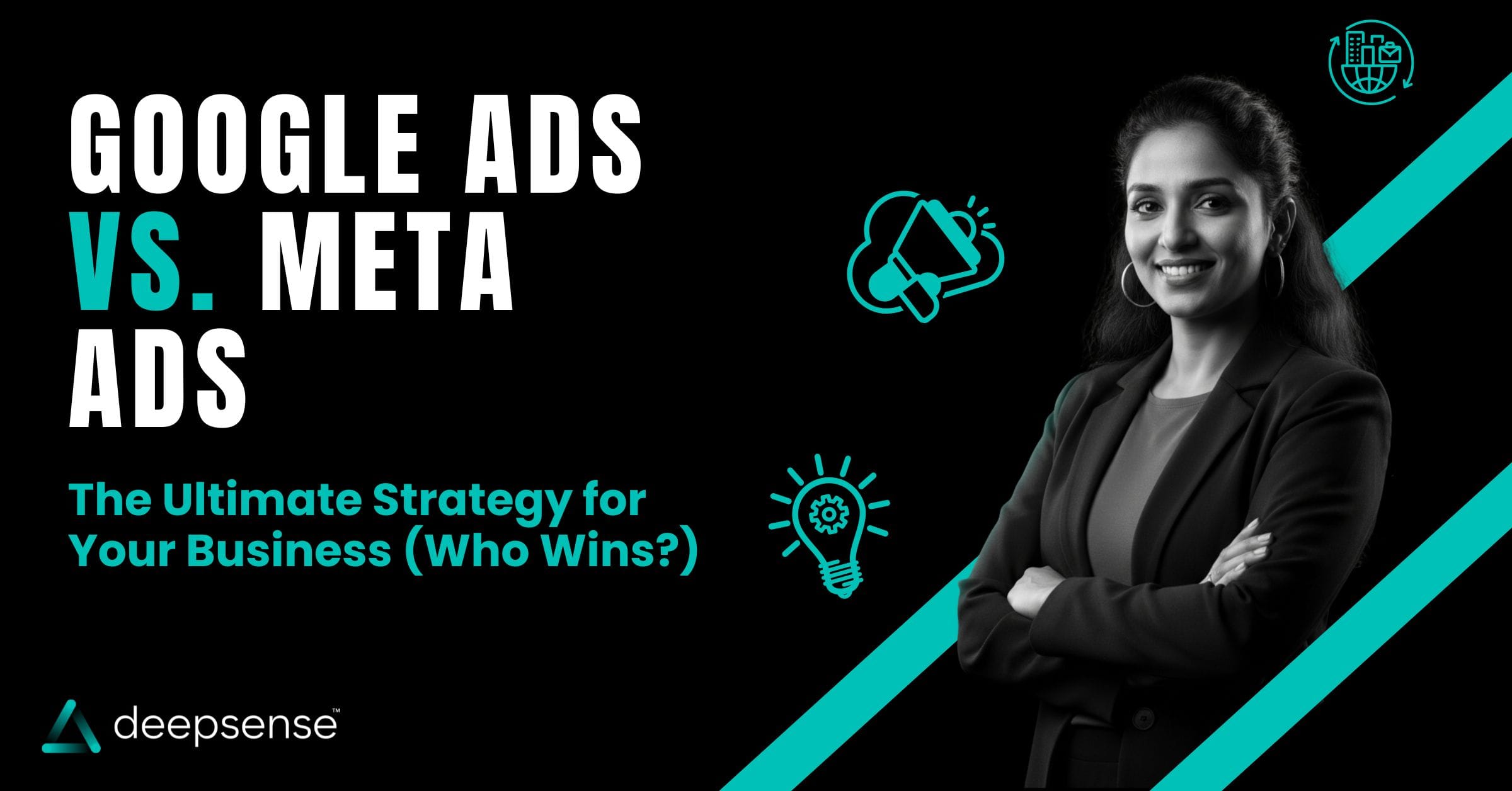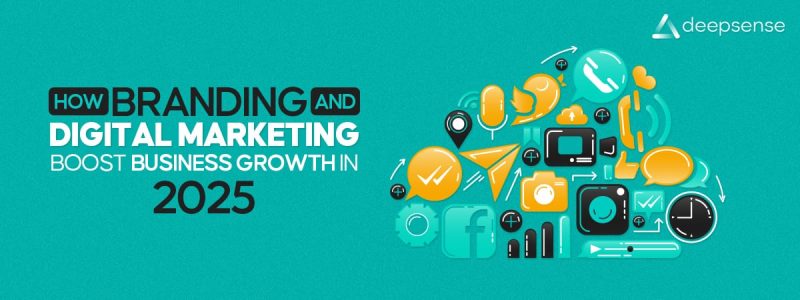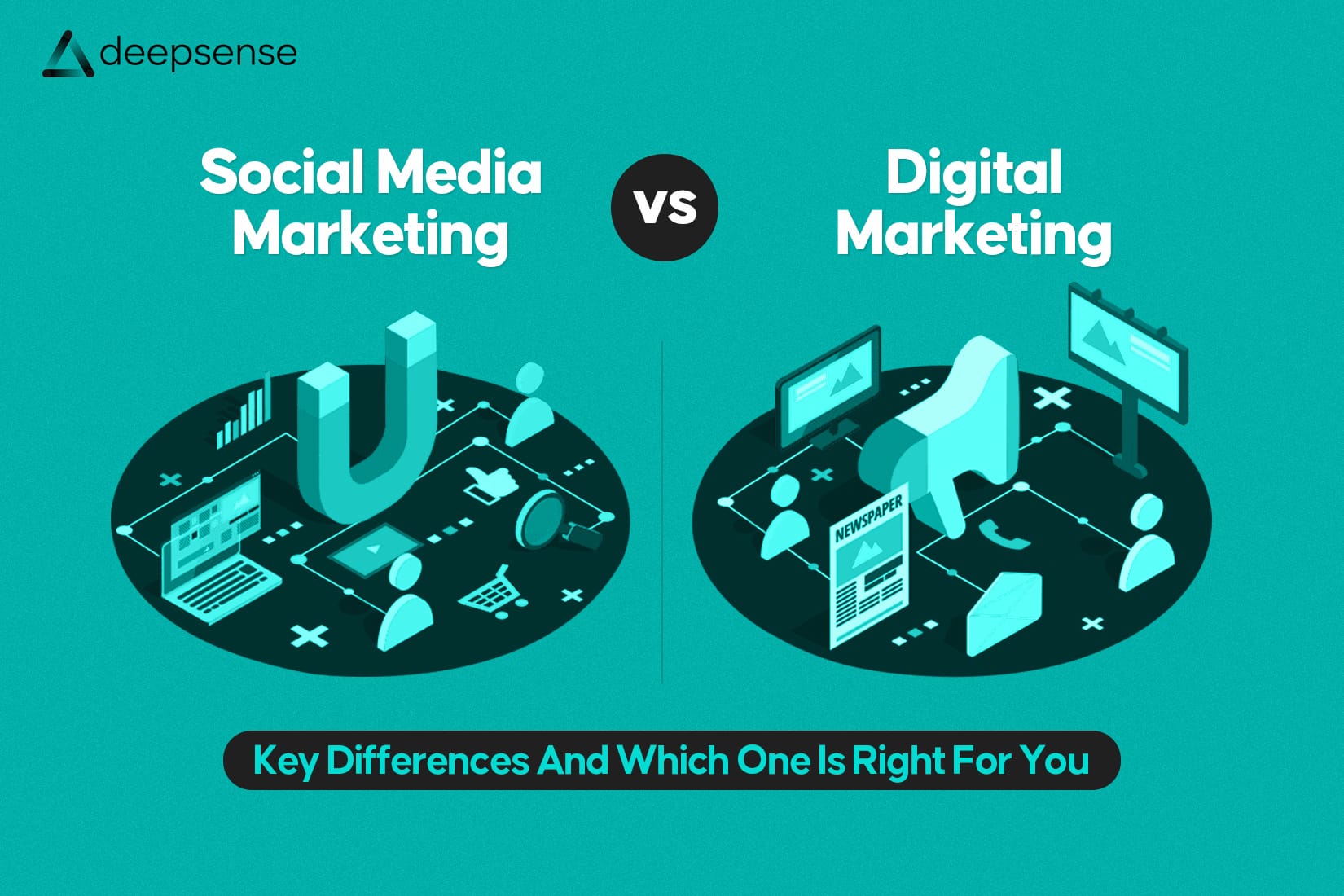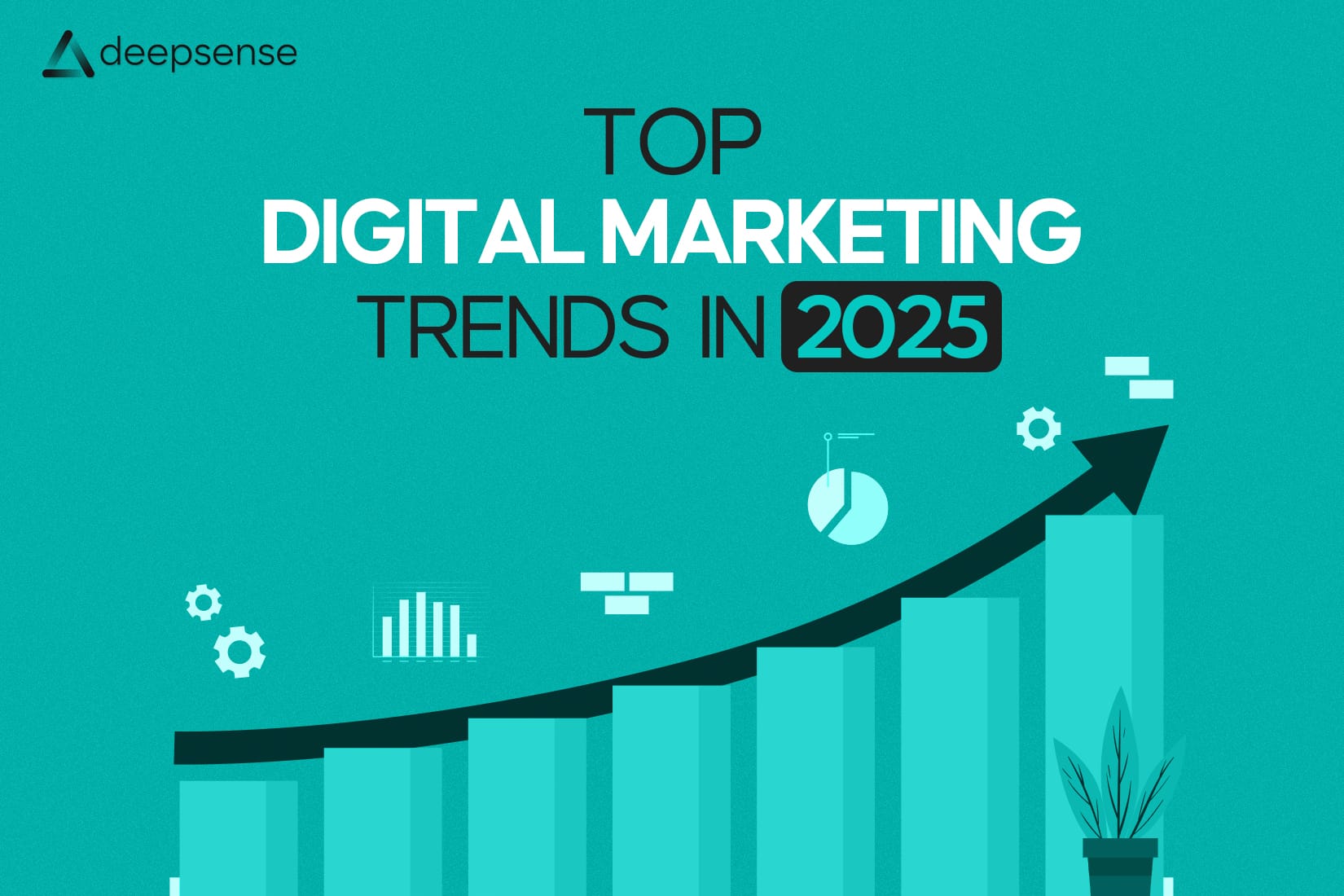Hey there, savvy marketer! Ever felt like you’re standing at a digital crossroads, wondering whether to pour your ad budget into Google Ads vs. Meta Ads ? You’re not alone. These two giants dominate the online advertising world, each promising to get your business in front of the right people. But which one is truly “better” for your business? Let’s break it down, no jargon, just real talk.
Meet the Players: The Intent Seeker vs. The Discovery Dynamo
First things first, let’s get acquainted with our contenders:
- Google Ads (The Intent Seeker): Think of Google as your super-helpful personal shopper. When someone types “best running shoes” into Google Search, they’re showing clear intent. Google Ads swoops in, showing them exactly what they’re looking for, right when they’re looking for it. This includes ads on Search, YouTube, Gmail, Google Maps, and a vast network of websites. It’s all about demand capture.
- Meta Ads (The Discovery Dynamo): Now imagine your friend scrolling through Instagram, seeing a cool new gadget they didn’t even know existed, and suddenly needing it. That’s Meta Ads (Facebook, Instagram, Messenger, Audience Network) in action. It’s a master of discovery-based advertising, showing people things they might like based on their demographics, interests, and behaviors, even when they weren’t actively searching. It’s about demand creation.
A Quick Trip Down Memory Lane: How We Got Here
Digital advertising has come a long way! Google Ads started as AdWords, a text-heavy platform focused purely on keywords, helping businesses get found in search results. Meta (then Facebook) Ads grew out of the social media boom, leveraging personal data to connect people with relevant brands. Over the years, both platforms have piled on features, integrations, and, yes, a whole lot of AI, transforming them into the complex, powerful tools they are today. (Remember when Facebook Ads was just Facebook Ads? Simpler times, maybe, but less powerful!)
The Core Difference: How They Read Your Customers’ Minds
Google Ads: “I want THIS!”
This platform excels at Google Ads intent-based targeting, reaching users who are actively seeking something specific.
- How it works: People proactively tell Google what they want (e.g., “emergency plumber,” “vegan dog food subscription”).
- Targeting: Think laser-focused. Keywords are king, but so are in-market audiences (people actively researching a product) and custom intent audiences (based on what they’ve searched or browsed).
- Best for:
- High purchase intent and immediate needs.
- Google Ads vs Meta Ads for B2B lead generation, where prospects are actively looking for solutions.
- Which ad platform is best for e-commerce when driving direct sales, especially with visually rich Shopping Ads showing product pictures and prices.
- Example: A user searching for “CRM software for small business” is practically waving their wallet.
Meta Ads: “Hmm, that looks interesting…”
Meta shines with Meta Ads interest-based targeting, introducing products and services to users who might not know they need them yet.
- How it works: Meta intelligently figures out what people might want based on their digital footprint, pages they like, groups they join, videos they watch, and even their offline behaviors.
- Targeting: Offers sophisticated segmentation by age, gender, location, specific interests (e.g., “yoga enthusiasts,” “luxury fashion”), behaviors (online shopping habits), and the powerful “Lookalike Audiences” feature, which finds new users similar to your best existing customers.
- Best for:
- Grow brand awareness with Meta Ads and building brand community.
- Creating new demand, especially for visually appealing products or impulse buys.
- Reaching Google Ads vs Meta Ads for B2B decision-makers in their “off-hours” while they’re browsing social feeds.
- Which ad platform is best for e-commerce when launching new products or targeting impulse buyers.
- Example: Showing a stunning new jewelry collection to someone who follows several fashion influencers.
Show Me the Money: Costs & Conversions
Alright, let’s talk budget.
- Google Ads: Generally, you’ll see a higher Cost Per Click (CPC) here. In 2025, the average CPC across all industries is around $5.26, and a lead can cost $70.11. But don’t let that scare you! Because users have high intent, these clicks often lead to higher conversion rates (around 3.75% for search) and a fantastic Return On Ad Spend (ROAS), sometimes 4:1 or even 6:1 for e-commerce. You pay more, but the leads are often hotter.
- Meta Ads: Often boasts a lower average CPC (around $0.69) and CPM (around $12.58 per 1,000 impressions). You can stretch your budget further for broad reach. While direct conversion intent might be lower, the overall conversion rate can be impressive (around 9.21% for B2C) by nurturing interest over time, with ROAS often hitting 6:1 or even 7.5:1 for e-commerce. This makes it a cost-effective choice for Ecommerce advertising strategy focused on discovery.
The Good, The Bad, and The Algorithmic: Advantages & Disadvantages
Both platforms are powerful, but they have their quirks.
Google Ads Perks:
- High-Intent Users: You’re reaching people ready to buy.
- Fast Results: Ads can appear immediately after launch, driving traffic and potential conversions quickly.
- Massive Reach: Billions of searches, millions of sites and apps on the Display Network.
- Deep Analytics: Provides extensive data and real-time analytics for performance tracking and optimization.
Google Ads Headaches:
- Pricey Clicks: High competition for popular keywords can lead to expensive CPCs.
- Steep Learning Curve: Can be complex to set up and manage successfully, requiring significant expertise.
- Landing Page is KING: Performance is heavily reliant on the quality and relevance of your landing pages.
Meta Ads Perks:
- Massive & Diverse Audience: Billions of active users across Facebook, Instagram, Messenger, and Audience Network.
- Crazy Accurate Targeting: Meta Ads interest-based targeting is precise, leveraging demographics, interests, and behaviors.
- Visually Stunning Ads: Supports a wide variety of engaging visual formats, perfect for storytelling and showcasing products.
- Brand Building Powerhouse: Excellent for increasing brand awareness and encouraging discovery.
- Cost-Effective Reach: Generally lower CPCs compared to Google Ads.
Meta Ads Headaches:
- Lower Immediate Intent: Users are often in a social browsing mindset, not an active buying one.
- Privacy Punch-Ups: Recent changes like iOS 14.5 and the upcoming integration of Meta AI conversations into ad targeting (Dec 2025) raise concerns and impact granular control.
- Algorithm Shenanigans: Meta’s algorithm prioritizes native content, potentially making paid reach essential for visibility.
- Ad Fatigue: Showing the same ad too many times can annoy users and reduce effectiveness.
The Whispers of Controversy: What Everyone’s Talking About
Digital advertising isn’t without its drama, and regulatory and technological shifts constantly reshape the landscape.
- Meta’s Data Dilemma: Post-iOS 14.5, granular targeting became fuzzier. Now, Meta is integrating conversations with its generative AI chatbot, Meta AI (starting December 2025!), into ad targeting. While this promises hyper-personalization, it raises eyebrows about privacy and user control, with regions like the UK and EU implementing stricter data privacy regulations. This impacts how Meta Ads interest-based targeting evolves.
- Google’s AI Overlords (and the SEO Shake-up): Google’s Search Generative Experience (SGE), now “AI Overviews,” is profoundly reshaping search. AI-generated summaries at the top of results mean fewer clicks to traditional websites. This forces advertisers to adapt, focusing on providing helpful, E-E-A-T (Experience, Expertise, Authoritativeness, Trustworthiness) content that Google’s AI wants to cite, both organically and for ad landing pages. These latest Google SERP updates and latest SEO updates are a call to optimize content for LLM crawling and ensure your expertise shines through. The EEAT framework implications comparing ad platforms mean trust and quality are paramount, even for paid placements.
- Complexity & Transparency: Both platforms are increasingly automated with AI tools like Google’s Performance Max and Meta’s Advantage+ Audiences. While these can be powerful for performance, they sometimes offer less transparency for advertisers on exactly where their ads are showing or who they’re reaching, demanding a new level of trust in algorithmic optimization.
Crystal Ball Gazing: The Future of Paid Ads (It’s All About AI!)
Hold onto your hats, because the future is even more AI-driven:
- AI is Your New Co-Pilot: Expect both Google Ads vs Meta Ads to lean heavily into generative AI for everything from crafting ad copy and visuals to hyper-optimizing bids and audience targeting in real-time. Performance Max and Advantage+ are just the beginning, impacting how you optimize content for LLM crawling.
- Hyper-Personalization on Steroids: Meta’s integration of Meta AI conversations into targeting is a peek into a future where ads are eerily specific. Google will continue refining its understanding of complex user intent, as detailed in latest SEO updates.
- The Content Revolution: Google’s continuous core updates (we’ve had several in late 2024 and 2025!) are all about rewarding “people-first,” high-quality content that truly demonstrates E-E-A-T. This means your ad landing pages need to be stellar, aligning with EEAT framework implications comparing ad platforms. SEO will merge with “Generative Engine Optimization” (GEO).
- Unified Analytics is Key: With privacy changes and multi-touch journeys, relying on one platform’s attribution is old news. Tools that combine data from both Google and Meta (like Triple Whale or Northbeam) will be essential to see the true ROI.
The Grand Finale: Why They’re Better Together (The Power Couple Strategy!)
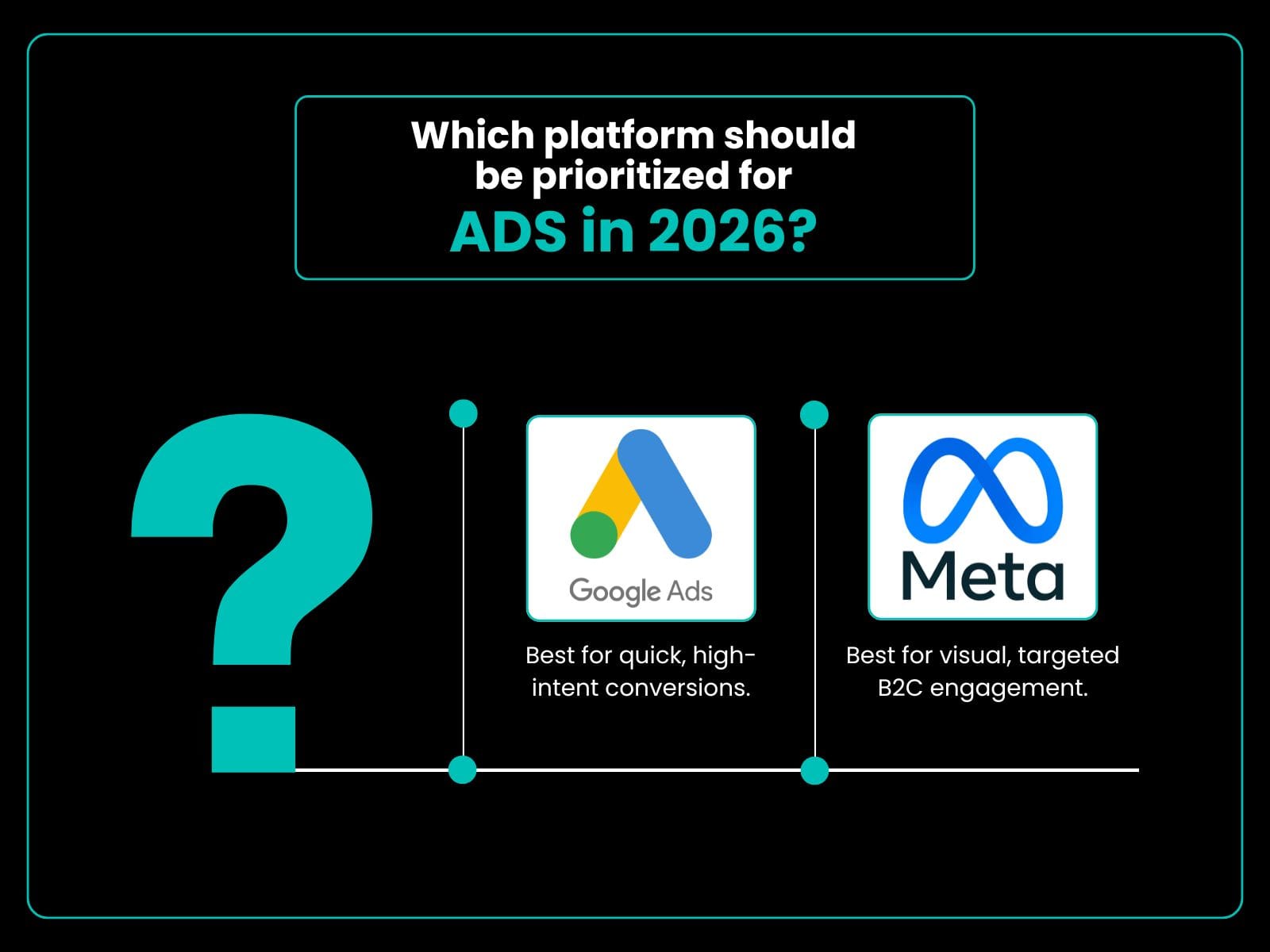
So, which one wins? Neither. The real winner is your business when you use Google Ads and Meta Ads together smartly!
Think of them as a dynamic duo, a marketing “power couple,” especially when planning your full-funnel marketing strategy:
- Awareness & Demand Generation (Meta’s Stage): Use Meta Ads to introduce your brand, tell engaging stories (hello, Reels and Stories!), and spark interest among people who weren’t looking for you. Get them curious! This is where grow brand awareness with Meta Ads truly shines.
- Consideration & Demand Capture (Both Platforms Unite!):
Meta: Retarget those who engaged with your initial ads with more detailed info, testimonials, or lead forms. Nurture their interest through Meta Ads interest-based targeting.
Google: As those Meta-influenced users start searching for solutions (maybe even your brand name!), Google Ads steps in with targeted search ads and Shopping ads to capture that explicit intent using Google Ads intent-based targeting. - Conversion (Google’s Sweet Spot): When they’re ready to buy, Google Ads (especially Shopping and highly specific Search campaigns) is your closer. Performance Max campaigns can also drive conversions across Google’s entire network. This is key for Ecommerce advertising strategy.
- Loyalty & Retention (Meta for Relationships, Google for Upsells): Use Meta to re-engage past customers with exclusive offers or complementary products, building community. Use Google’s Customer Match to remind existing clients of new offerings. This covers all stages of the Marketing funnel Google vs Meta.
By weaving Google Ads vs Meta Ads together, you create a seamless journey for your customers, from initial spark of interest to loyal advocate. It’s about being present, relevant, and compelling wherever your audience happens to be online. So, stop picking sides and start orchestrating your advertising symphony!
FAQ:
1: What’s the main difference between Google Ads and Meta Ads?
Google Ads focuses on intent-based marketing, your ads appear when people actively search for something. Meta Ads (on Facebook and Instagram), on the other hand, are designed for interest-based marketing, they target users based on their behavior, demographics, and interests, even if they aren’t actively searching.
2: Which platform gives better ROI, Google Ads or Meta Ads?
It depends on your business goals. Google Ads often provides faster conversions for high-intent searches, while Meta Ads excel at brand awareness and audience engagement. The best ROI usually comes from using both strategically.
3: Are Google Ads more expensive than Meta Ads?
Typically, Google Ads have a higher cost-per-click (CPC) because you’re bidding on competitive search terms. Meta Ads tend to be more affordable but may require longer campaigns to convert. Your overall cost depends on audience size, targeting, and ad quality.
4: Can small businesses benefit from Google Ads or Meta Ads?
Absolutely! Both platforms offer flexible budgets. Small businesses can start with low daily spends, test multiple ad creatives, and scale based on performance. The key is smart targeting and consistent optimization.
5: Which platform is better for E-Commerce?
For E-Commerce, Meta Ads are great for showcasing products visually and retargeting users who’ve visited your store. Google Ads, especially Shopping and Search campaigns, work best when people are ready to buy and are searching for specific items.
6: How do targeting options differ between Google Ads and Meta Ads?
Google Ads targets users based on search intent, keywords, and location, while Meta Ads leverage user data like age, interests, behavior, and device usage. Meta’s targeting is broader and more audience-driven, whereas Google’s is search-specific.
7: Should I use both Google Ads and Meta Ads together?
Yes! Combining them creates a powerful funnel, Google Ads captures searchers ready to buy, while Meta Ads builds awareness and re-engages visitors. Together, they can strengthen your visibility and boost conversions.
8: How can I measure success on both platforms?
Use each platform’s analytics tools, Google Ads’ “Conversions” and Meta Ads’ “Insights.” Track KPIs like CTR (click-through rate), CPC, conversion rate, and ROAS (return on ad spend). Comparing both helps identify which channel performs better for your goals.
9: Do Google Ads or Meta Ads work better for B2B marketing?
Google Ads often perform better for B2B since businesses tend to search directly for solutions or services. However, Meta Ads can be valuable for brand storytelling, building trust, and remarketing to decision-makers.
10: How do I decide which platform to start with?
Start by defining your objective. If you want quick leads or sales, begin with Google Ads. If your goal is brand awareness or community growth, Meta Ads are ideal. Testing both for a month can reveal what fits your audience best.


